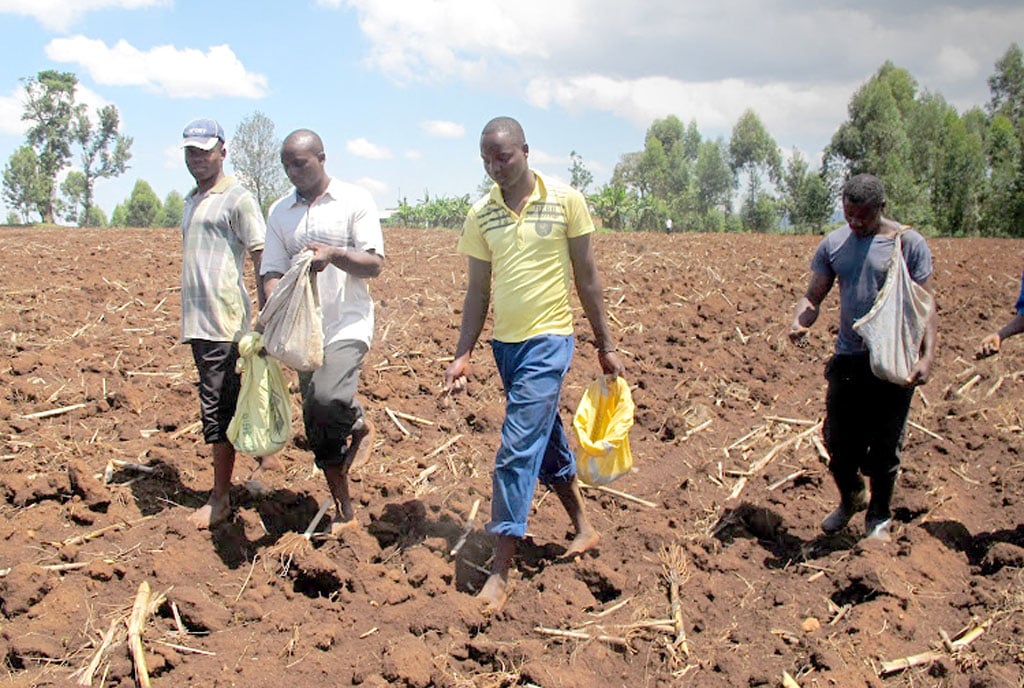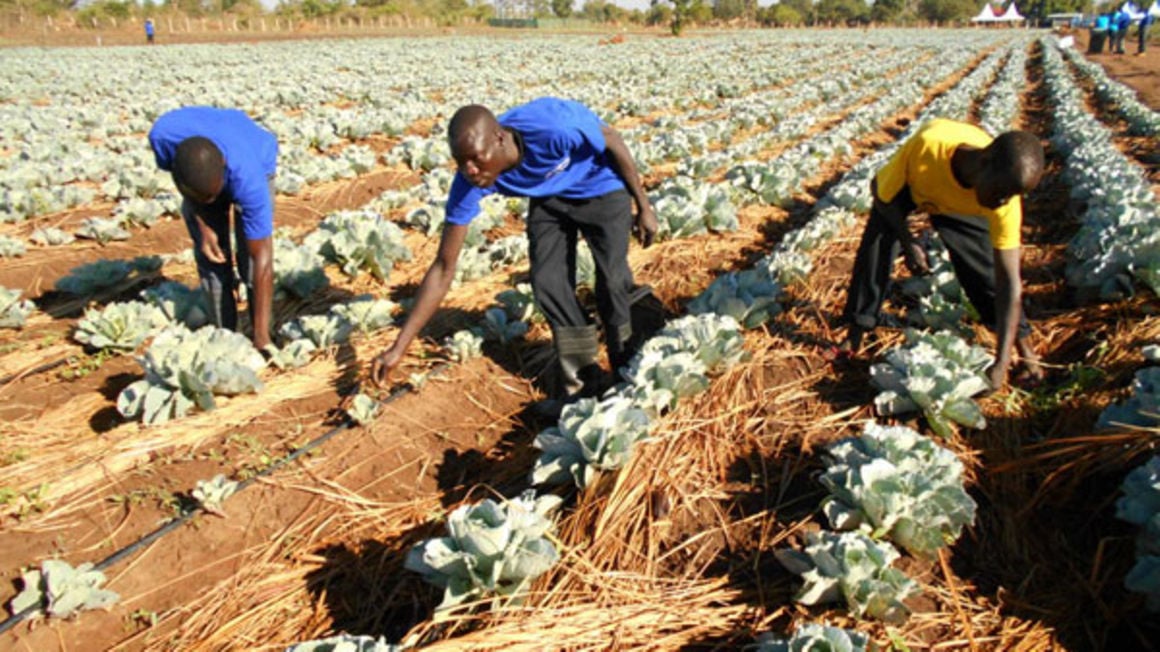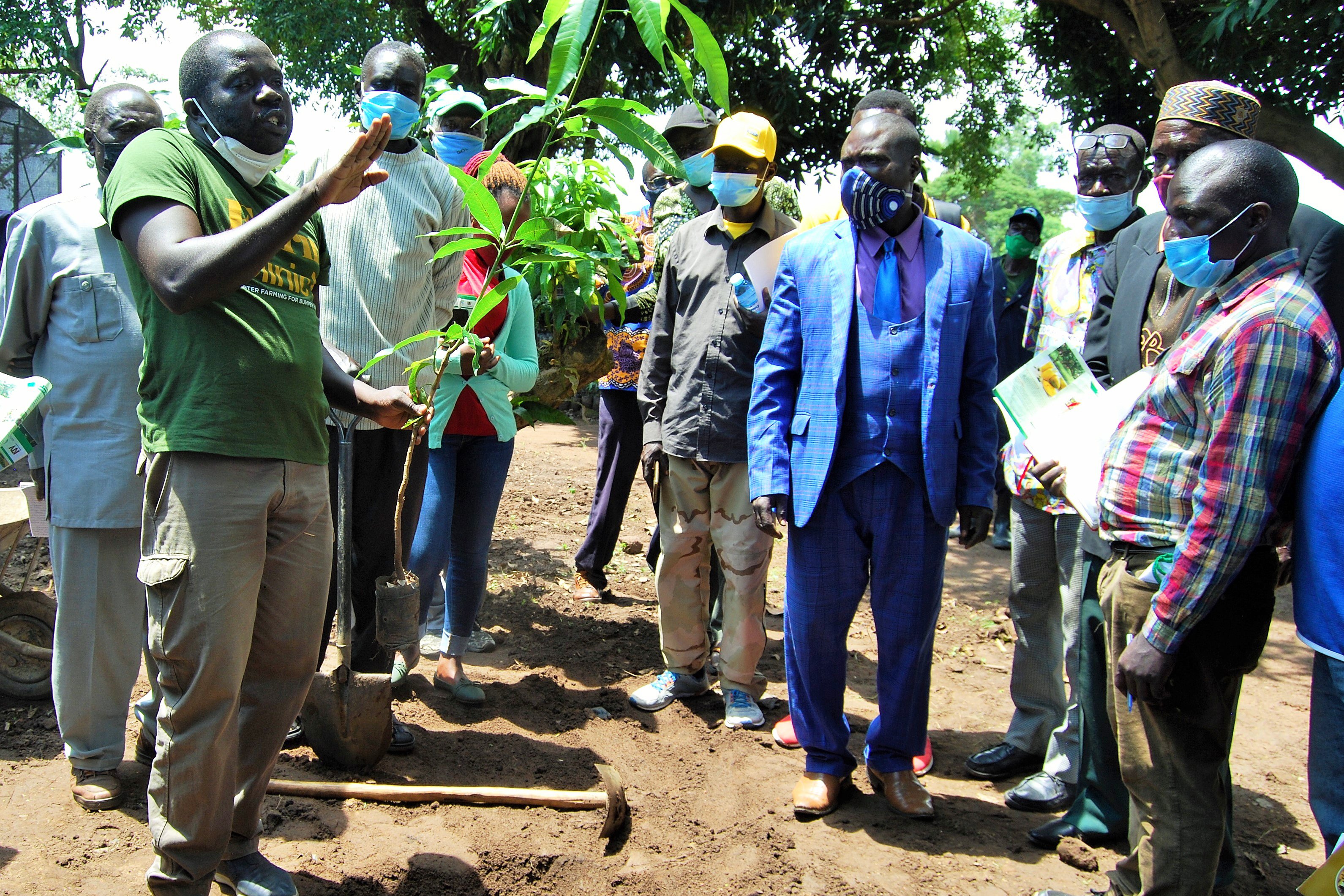Prime
Here is how soil type and PH can affect your yields

Farmers are advised to check the PH of the soil ahead of the planting season. PHOTO/COURTESY
What you need to know:
- Soil PH is a measure of the degree for acidity or alkalinity of soil.
With the planting season setting in, it is important to know the pH of the soil in order for you to know what plants you will have to grow on it.
Knowing the PH determines how soil absorbs nutrients and water. If you do not have the proper pH level for your soil, a large number of nutrients in the fertilisers that you will apply is likely to go into waste simply because the soil cannot absorb them.
You will have minimum and poor-quality yields. This is why the pH of soil is important to measure.
What is soil PH and why you should care to know
According to Fanuel Ongua, a research officer at the National Agricultural Research Laboratories (NARL) at the National Agricultural Research Organisation (Naro), soil pH is a measure of the degree for acidity or alkalinity of soil. It indicates the concentration of hydrogen ions in the soil solution.
The pH scale ranges from 0 to 14, with 7 being considered neutral. Values below 7 indicate acidic soil, while values above 7 indicate alkaline (basic) soil. It is important for one to know the pH of the soil before planting anything Ongua remarks that soil pH plays a crucial role in determining the availability of essential nutrients to plants.
He says, “Most plants prefer soil with a pH between 6 and 7, although optimal pH levels can vary depending on the plant species.”
Nutrient availability
Soil pH influences the availability of essential nutrients to plants. Different nutrients are more readily available to plants at specific PH levels. For example, phosphorus, iron, and manganese are more available in acidic soils, while calcium and magnesium are more available in alkaline soils. Assessing soil pH helps ensure that the soil provides the necessary nutrients for optimal plant growth. Toxicity and deficiency prevention extreme PH levels can lead to nutrient deficiencies or toxicities. “Acidic soils for instance, can lead to aluminium toxicity, while alkaline soils can induce nutrient deficiencies in certain micronutrients. By understanding soil pH, growers can take steps to prevent these issues by adjusting PH levels as necessary,” Ongua says.
Soil living organisms
Ensuring activity of important soil living organisms: Soil PH affects the activity and diversity of soil microorganisms, including beneficial bacteria and fungi that play crucial roles in nutrient cycling, disease suppression, and soil structure improvement. Assessing soil PH allows growers to create conditions conducive to beneficial microbial activity.
Crop suitability
Different crops have varying preferences for soil PH. Some crops thrive in acidic soils, while others prefer neutral or alkaline conditions. By knowing the soil PH, growers can select crops that are well-suited to the existing soil conditions, maximizing yields and minimizing the need for soil amendments.
Optimal PH for specific crop growth
“Even within a suitable pH range, specific crops may perform better at certain PH levels. For example, blueberries prefer acidic soils with a PH range of 4.5 to 5.5, while asparagus prefers slighty alkaline soils with a PH range of 7.0 to 8.0. Assessing soil PH allows growers to adjust PH levels to match the requirements of their chosen crops,” he says.
What types of soil favour which crops?
According to Ongua, soils are broadly categorised based on the types of material constituents i.e., mineral and organic soils. The mineral soils are further categorized according to the particle size distribution (clay, sand, silt, etc.). Soils are also categorised based on their expression of colours.
What determines the colours of most soils are the presence of organic material and various oxides of Iron determined by the level and degree of soil drainage.
These grouping based on colour include, Red soils found on the well-drained, upper and midslope position on the landscape, brown and the yellowish brown soils found on the lower slopes and toe slope positions on the landscape. These soils respond very well to phosphatic and nitrogenous fertilisers.
He says, “The grey and sometimes dark soils found in the poorly drained areas such as swaps and wetlands and have drainage challenges. The soils are also grouped according to their age in which we have young soils especially found in the Elgon and Kisoro areas of recent volcanic deposits which still have greater potentials to supply and avail plant nutrients with minimum additional inputs, and the old and very old soils which cover the rest of the Uganda’s surface.”
These aged soils are deficient in the much-needed plant nutrients and cannot support the crops to achieve and reach their greatest yield potentials without additional nutrient input sources mineral and organic fertilisers.
Ongua says, “Other groupings of soils are based on the plant rooting depth and rooting challenges and in these categories, we have the deep soils, shallow soils and stony soils. Deep soils encourage better plant root development and the capacity for moisture storage for a longer period. They can support all crop types including perennial and annual crops.”
This is not the case for shallow and stony soils. Shallow and stony soils can be used for pasture, forestry and agro forestry establishments. It will require supplemental irrigation if these shallow soils are to be used for any other crops due to their poor moisture storage and limiting rooting depth.
Different crops have varying preferences for soil types, but here are some general guidelines.
Sandy soils
Samson Luwagga, an agronomist at Samster Farming Unit Wakiso says, “Crops that prefer well-drained soils thrive in sandy soil. These include: Root vegetables such as carrots, radishes, and potatoes, leafy greens such as lettuce, spinach, and kale, legumes such as peas and beans, certain fruit crops like strawberries and melons.”
Clay soils
Crops that can tolerate heavier, moisture-retaining soils are suitable for clay soil. These include: Grains such as rice, wheat and barley, Cabbage, broccoli.
Loam soils
“Loamy soil, which is a balanced mixture of sand, silt, and clay, is ideal for a wide range of crops including annuals and perennials. These include: Most vegetables, including tomatoes, peppers, cucumbers, and squash, Fruits crops and perennial crops such as coffee, Banana, Cocoa, apples, pears, and grapes, annual crops such as maize,” Luwagga says.
Peat soils
Crops that prefer acidic, moisture-retaining soils do well in peaty soil. These include: Certain vegetables such as onions and potatoes.




